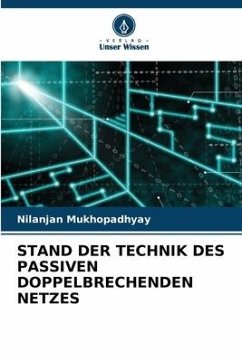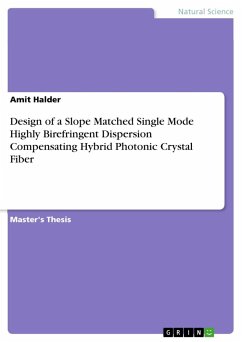
STATE OF THE ART PASSIVE BIREFRINGENT NETWORK
Versandkostenfrei!
Versandfertig in 6-10 Tagen
53,99 €
inkl. MwSt.

PAYBACK Punkte
27 °P sammeln!
Polarization optics is solely based on the phenomenon called birefringence. The materials that exhibit birefringence naturally often find applications in polarizing devices, although this phenomenon can be induced in some materials externally. However, their performance is wavelength dependent, which is termed as chromaticity. But in many applications, achromatic devices are in demand. Therefore, the elimination of this chromatic dependency has been an interesting field for researchers in this domain. Materials like crystalline quartz, MgF2 etc., are being widely used for designing achromatic ...
Polarization optics is solely based on the phenomenon called birefringence. The materials that exhibit birefringence naturally often find applications in polarizing devices, although this phenomenon can be induced in some materials externally. However, their performance is wavelength dependent, which is termed as chromaticity. But in many applications, achromatic devices are in demand. Therefore, the elimination of this chromatic dependency has been an interesting field for researchers in this domain. Materials like crystalline quartz, MgF2 etc., are being widely used for designing achromatic phase retarders that provide constant phase difference between two orthogonal components of light over a wide range of wavelengths. In this book, birefringent network based on waveplates of same materials, as well as novel combinations of different birefringent materials have been introduced to achieve superachromatic behaviour over broad wavelength regions. Moreover, an optical filter with a new birefringent network is also discussed that exhibits a narrow bandpass transmission characteristic in the visible range for astronomical applications.












